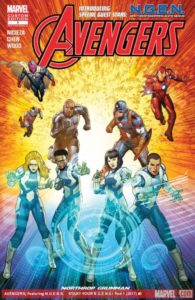Since we’ve been discussing the advertising “pitch”, I thought I’d include a baseball reference as my blog title. In baseball, the umpire at home plate calls the pitches as balls or strikes, and we’ve been learning that the decisions makers in ad pitch meetings aren’t necessarily the best umpires. We’ve seen examples of ad campaigns that raised questions about ethics and some that were simply in poor taste. I’ve wondered about the processes that permitted some of these concepts to advance, and who was responsible for approving them?
While watching scenes in the Tommy Bahama episode (The Pitch, 2013), there was a noticeable demographic imbalance even when the target market was clearly identified as women’s apparel. We’ve also learned from Brandon Rochon about some of the pitching challenges his teams have faced. It’s becoming evident that clients aren’t always the experts on connecting with an intended target demographic, and it’s our job to point out Peter Coughter’s advice, “Remember, this is about making a human connection” (Coughter, 2012, p.141).
Dr. Akira has also shared his perspectives on decision makers, and this reminded me about an incident at my company. Coincidentally, this past weekend was New York Comic Con 2018, and it was at last year’s NYCC where our company suffered a failed campaign launch. Marvel Comics and Northrop Grumman planned to announce a partnership for a comic book at NYCC (Polygon, 2017). However, the partnership was canceled prior to the scheduled announcement, because of a backlash when the comic book fans got wind of it. It was an embarrassing episode for Northrop Grumman and Marvel Comics quickly took to Twitter and distanced itself from the project. At the root of the comic book fan uproar was that Northrop Grumman was a large defense contractor, which Marvel fans felt was too much like Stark Industries, a weapons manufacturer in their comics.
Many in our company felt the failure was due to insufficient research to understand the intended target market. Details of the project was not shared outside a small group, mainly at the headquarters. Shortly before the campaign details were finalized, some members on my team were involved with an informal survey of employees at an internal company event. The feedback from employees was not strong support for the concept of the comic book, and some employees who identified themselves as comic book fans expressed that they did not think it was a good idea. The feedback was communicated to our headquarters, but none of the group of decision makers were involved with gathering direct feedback, so those who conveyed the feedback to them felt it was not taken seriously. So if we go back to Coughter’s advice, “we’ve got to make our audiences feel something” (Coughter, 2012, p. 74). Perhaps we should stipulate that the audience should feel that something is “right”.
While the people involved with this project were in high positions of responsibility and power, this example clearly shows that these decision makers were disconnected from the intended target audience.
Kevin Gonzalez
CMGT 541-A
References:
Coughter, P. (2012). The art of the pitch: Persuasion and presentation skills that win business. Palmgrave MacMillan.
Polygon, October 7, 2017. Julia Alexander. https://www.polygon.com/2017/10/7/16440850/marvel-northrop-grumman-comic-event-canceled-nycc-2017
The Pitch (2013). Season 2, Episode 4: Tommy Bahama. AMC.


11 Responses to Who’s calling the Balls & Strikes?